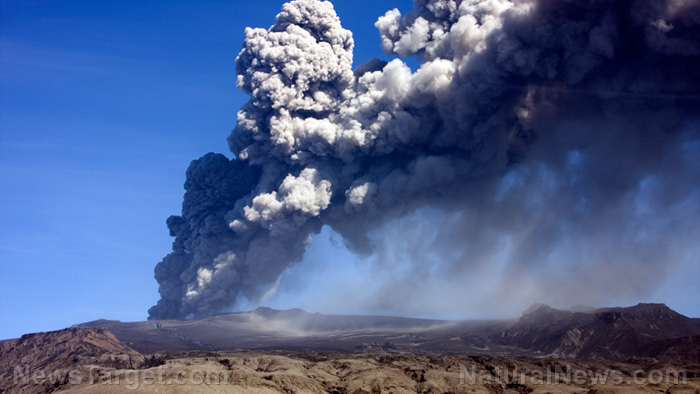- Yellowstone’s upper magma chamber is just 2.3 miles deep, closer than previously thought, raising new questions about eruption risks.
- Scientists used advanced seismic imaging to map the magma system, revealing a silica-rich upper chamber and a larger basalt reservoir below.
- Volatile gases venting naturally reduce pressure but don’t eliminate the long-term threat of a catastrophic eruption.
- Past supereruptions reshaped landscapes and altered global climates — the last one was 640,000 years ago.
- NASA’s controversial plan to cool the magma via drilling carries risks and would take millennia to show effects.
Yellowstone National Park, home to breathtaking geysers and hot springs, sits atop one of the world’s most dangerous natural threats: a simmering supervolcano capable of global devastation. New research reveals that the upper edge of its massive magma chamber lies just 2.3 miles beneath Earth’s surface, closer than previously documented. While scientists stress an eruption is not impending, the findings sharpen understanding of the volcano’s structure and underscore the need for vigilance.
For decades, experts have monitored Yellowstone’s volcanic system, a geologic powerhouse fueled by a sprawling magma reservoir spanning 55 by 30 miles. Though the volcano hasn’t erupted in 640,000 years, its catastrophic potential — including ash clouds that could plunge global temperatures — keeps researchers alert. Now, using advanced seismic imaging, a team has mapped the magma chamber’s boundaries and composition with unprecedented precision.
Mapping the magma
The study, published in Nature, employed hundreds of portable and truck-mounted seismometers to generate 2D images of the subterranean landscape. By analyzing artificial seismic waves, scientists determined the upper magma chamber consists largely of rhyolite, a silica-rich volcanic rock. The chamber’s uppermost portion is 86% solid rock, with the remaining 14% comprising pore spaces filled with molten material, gases, and liquids.
Beneath this chamber lies an even larger magma reservoir, first identified in a 2015 University of Utah study. This lower reservoir, stretching 12 to 28 miles underground, contains low-silica basalt and dwarfs the upper chamber in volume. Researchers say the interaction between these two reservoirs drives Yellowstone’s famed geothermal activity and could influence future eruptions.
Crucially, the team found that volatile gases like sulfur dioxide and hydrogen sulfide, which accumulate at the magma chamber’s top, often escape through surface fissures, reducing pressure buildup. «If there’s a channel, they can escape to the surface,» said University of Utah geophysicist Fan-Chi Lin, a study co-author. This natural venting process may help delay explosive eruptions, though it doesn’t eliminate the long-term risk.
A history of devastation
Yellowstone’s past eruptions paint a grim picture. Three supereruptions occurred 2.1 million, 1.3 million, and 640,000 years ago, each expelling enough material to reshape landscapes and alter climates. The most recent blast blanketed much of North America in ash and left behind the Yellowstone Caldera, a 43-by-28-mile depression. Smaller eruptions followed as recently as 70,000 years ago.
While the new study confirms the magma system remains active, researchers emphasize no eruption is imminent. However, the proximity of the upper chamber to the surface raises questions about how quickly pressure could escalate. «[We now] understand more about the heat engine powering Yellowstone and about how melt is distributed,» said USGS geophysicist Mike Poland. «That can have ramifications for how we perceive the volcanic hazard.»
The challenge of preparedness
Despite reassurances, preparation remains critical. A full-scale eruption could eject molten rock 40 miles outward, incinerating everything within a 50-mile radius. Pyroclastic flows — deadly avalanches of superheated gas and debris — would compound destruction. Meanwhile, ashfall could smother crops and cripple infrastructure across the U.S., with millimeter-thick deposits reaching as far as Miami or Los Angeles.
NASA has even proposed a controversial $3.46 billion plan to drill into the volcano and pump water through its magma chambers, theoretically reducing eruption risks by cooling the system. Yet experts caution such efforts could inadvertently trigger disasters. «Drilling into the top of the magma chamber would be very risky,» researchers noted, adding that the process could take millennia to yield measurable cooling.
For now, monitoring continues. Seismic networks track underground shifts, while Yellowstone Volcano Observatory scientists analyze gas emissions and ground deformation. The recent discovery of a new hydrothermal vent near Nymph Lake—a small but notable geothermal event — highlights the system’s dynamism.
Though Yellowstone’s next supereruption might lie thousands of years in the future, its geologic restlessness ensures it remains a focal point for science — and a reminder of nature’s devastating power. Although the new research offers some helpful clues to inform forecasts, the planet’s largest active volcano still holds mysteries beneath its serene facade.
Sources for this article include:
